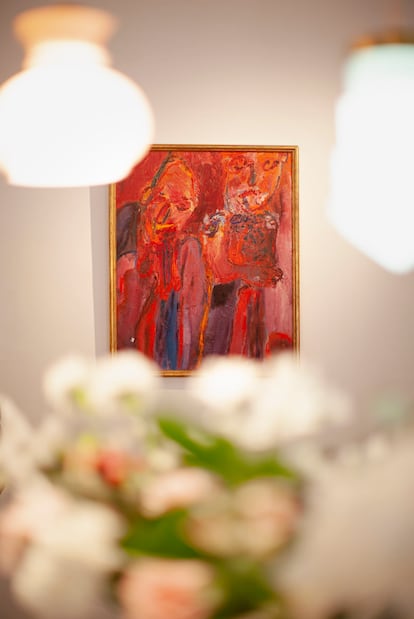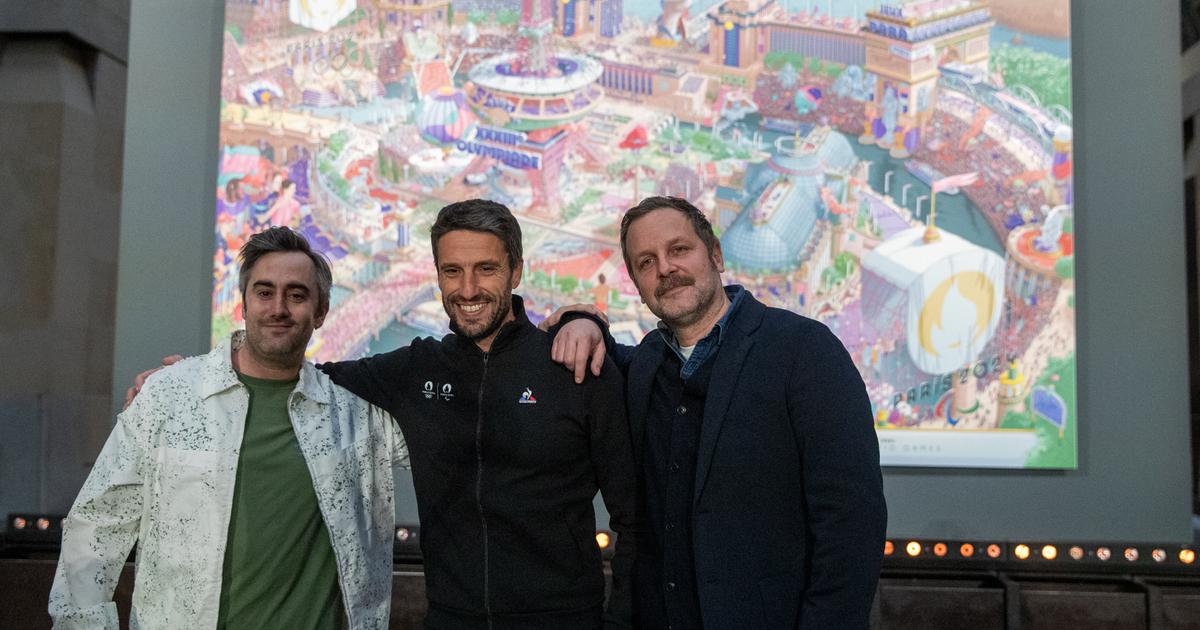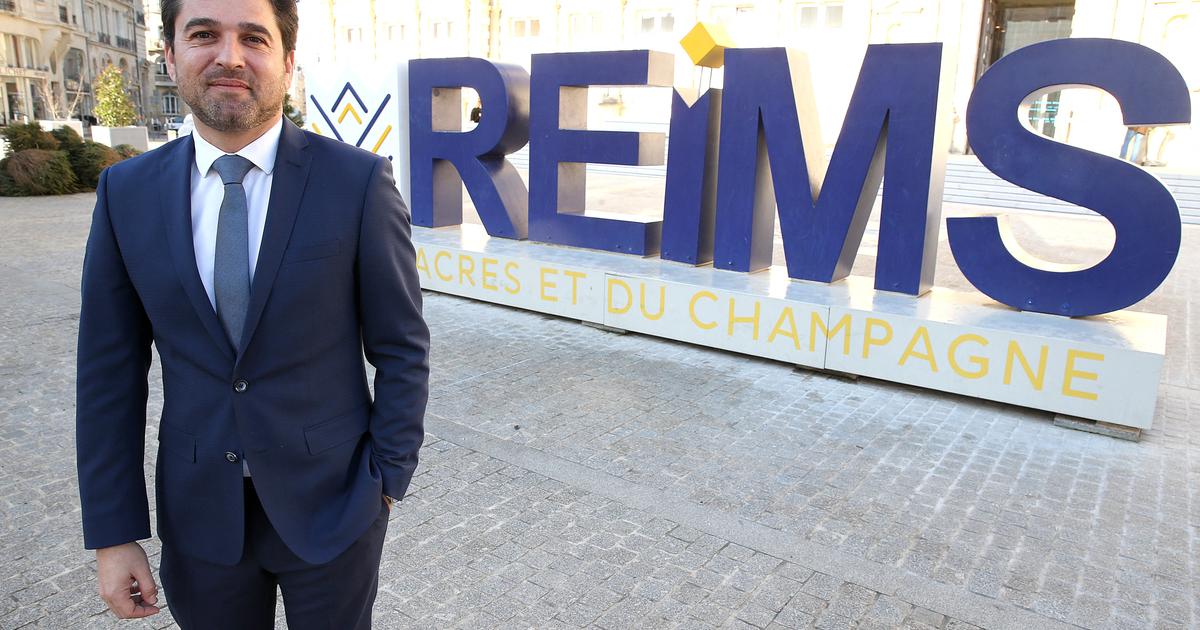Adolfo Arrieta (Madrid, 79 years old) arrived in Paris at the exact moment, that of the revolution. He had been living there for a few days when May 68 broke out, which he remembers today as if it were a dream: “It was something totally unreal. You would go to a bookstore and they would give you the books, you would go to a bar and they would get you free drinks. That only happened in the Latin Quarter, and it also lasted very little. But in the meantime it seemed that the world was really transforming ”. For him another transformation took place, a change of professional course. In Paris he was staying in a tiny hotel room that he shared with his friend Javier Grandes, and he had no space left to paint, which had been his first vocation. So he definitely changed the brushes for the movie camera, with which he had already shot a couple of shorts starring Grandes in Spain.
It would be the beginning of a career that would lead him to work with sacred monsters like Jean Marais, and to gain the admiration and friendship of Marguerite Duras. But that also meant resignations. Because his beginnings as a plastic artist were promising: shortly before he had exhibited together with other painters such as his friend Juan Giralt, and he also remembers that the mythical gallery owner Juana Mordó loved his lithographs. "She sold one to the Library of Congress in Washington herself," she says. Another in the same series is part of the exhibition that the Madrid gallery Espacio Valverde dedicates until May 29, and which includes both engravings and oil paintings on canvas. All were made between 1963 and 1965. The first are delicate black and white works where the influence of Matisse or the early Kandinsky can be traced,and the second, of rabid color, denote the interest that then had for the informalism of the Cobra group.
Turned into a
stable
underground
filmmaker
(if that is possible), he began to live according to a program: he spent spring and summer in Madrid and autumn and winter in Paris. In Paris he shot movies and in Madrid he edited them. In Madrid life was "gray" and in Paris another revolution was brewing which he also witnessed: the one promoted by the Homosexual Front for Revolutionary Action (FHAR), a political movement founded in 1971 to combat homophobia derived from the heteropatriarchal system. came from bourgeois or leftist circles. Some of his films from then, such as
Les intrigues de Sylvia Couski
(1975) and
Tam Tam
(1976) reflect a new sensibility that we refer to today as gender fluidity.
But Arrieta uses other terminology more consistent with that time when citing the transgender intellectuals and activists Hélène Hazera and Maud Molyneux, close to the FHAR, who starred in these films: “Like them, many people suddenly became transvestites, and this time it was something more spontaneous and less political than 68, like an outburst of nature.
A sparkle ... But that did not last long again, and Paris became much more conventional.
Before Paris was a party.
Now it is a French city ”.
One of Adolfo Arrieta's works exhibited in Madrid until May 29. Elena Grimaldi
In France he has always been a relatively minority director but recognized by the
cultural
establishment
. He is, for example, one of the few pre-Almodóvar Spanish authors to whose films the
Cahiers du Cinéma
have paid regular attention. He got a star like Marais to star in his first French short,
Le jouet criminel
(1969) (“he was so fed up with making swordsman films that he was delighted to participate”, he recalls), and at a film festival he met Duras, whom, contradicting the generalized image, he remembers as a “hideous woman, with a comic sense of existence ”.
Her partner, Dionys Mascolo, has also participated as an actor in his films, and today he is still friends with their son, Jean Mascolo, who puts him up in his flat on rue Saint-Benoît when he visits Paris.
And yet in Spain his work has rarely been released in commercial theaters, and it is hardly known outside of a minimum ghetto.
"Except when
Sylvia Couski
happened
in the Filmoteca and it was a total scandal", remembers.
"I became so fashionable that they asked me for autographs and everything."
The erotic cliche of the firefighter
His true commercial peak would come thanks to
Flammes
(1978), which he had initially conceived as a remake of his first feature film,
Le château de Pointilly
(1972), about the relationship between a father, his daughter and a governess, until he had the idea to introduce a fourth character, a Spanish firefighter (again, Javier Grandes) who burst through the window of the young woman's bedroom. The erotic cliché connected with a wider audience, something that for himself remains a mystery: "When I see it, it seems to me that I have not directed it." Despite this success, his next films would continue to be made under tight financial conditions, and he would not have some slack in the means until
Belle Dormant
(2016), a fairy tale featuring popular actors such as Mathieu Amalric and Niels Schneider, which seemed inspired by the visual style of Cocteau or Jacques Demy, although in reality the idea had come to him by looking at a British edition of
Illustrated
Sleeping Beauty
by Arthur Rackham in the 1920s.
“Painting is much more relaxed than cinema.
Cinema can be strenuous, and painting is much lighter ”
Now he works on two movies. The first is a medium-length film entitled
El anorak rojo
, which he wants to shoot with very simple means, “with a single camera, and without lamps or spotlights or anything”. And the second, an adaptation of
La Celestina
, a more expensive project that he has tried to set up several times, both in France and in Spain. “There must be something jinx there, and despite everything I can't help but keep trying. I love the original, but it is as if Fernando de Rojas was scared when he wrote it, and that is why he corrects his own audacity with very moralistic parts. I have removed all those parts to leave a libertine story, Italian style ”. And also musical, since his script sprinkles the plot with various songs and dance numbers.
What is not a whim but responds to a vital need. In fact, most of the time when he is not speaking, Arrieta hums some tune. “I like all music, I don't put any one above the others. Classical, pop and rock. David Bowie, Bob Marley, Schubert, and Gerswhin. When I wake up in the morning I wear
Porgy and Bess
. I also play the piano. I can play a little
jazz
. "
His piano did not fit in the study on Hortaleza street where he now lives, so he gave it to his godson, the writer Marcos Giralt Torrente (Juan Giralt's son), and he is now content with a small electronic keyboard.
However, in one of the lithographs that he now exhibits in Espacio Valverde, he can be seen, in his twenties version, sitting before an elegant black piano.
"When I see these works that I did when I was young, I think I would like to paint again," he says.
“It is much more relaxed than the cinema.
Cinema can be strenuous, and paint is much lighter.
Well, I can also do both.
Don't you think?
Adolfo Arrieta.
Valverde Space.
Madrid.
Until May 29th.
You can follow BABELIA on
and
, or sign up here to receive
our weekly newsletter
.




/cloudfront-eu-central-1.images.arcpublishing.com/prisa/TJB5J7N4BFFGFDTL6SXXWJH6NI.JPG)
/cloudfront-eu-central-1.images.arcpublishing.com/prisa/5BXUKKEUHRB45CXJXXPGMWBHYM.jpg)



